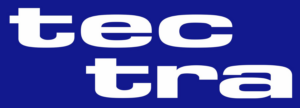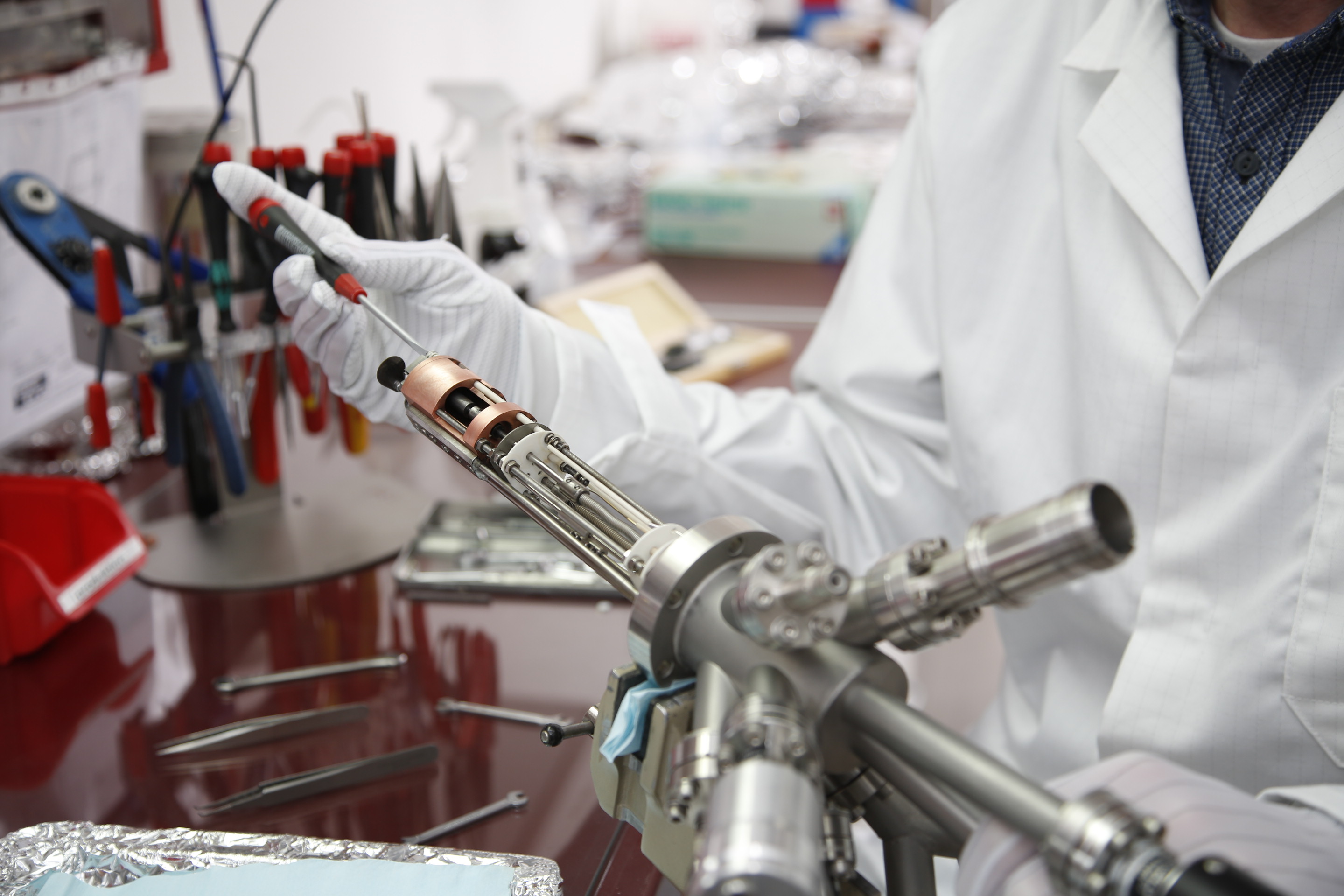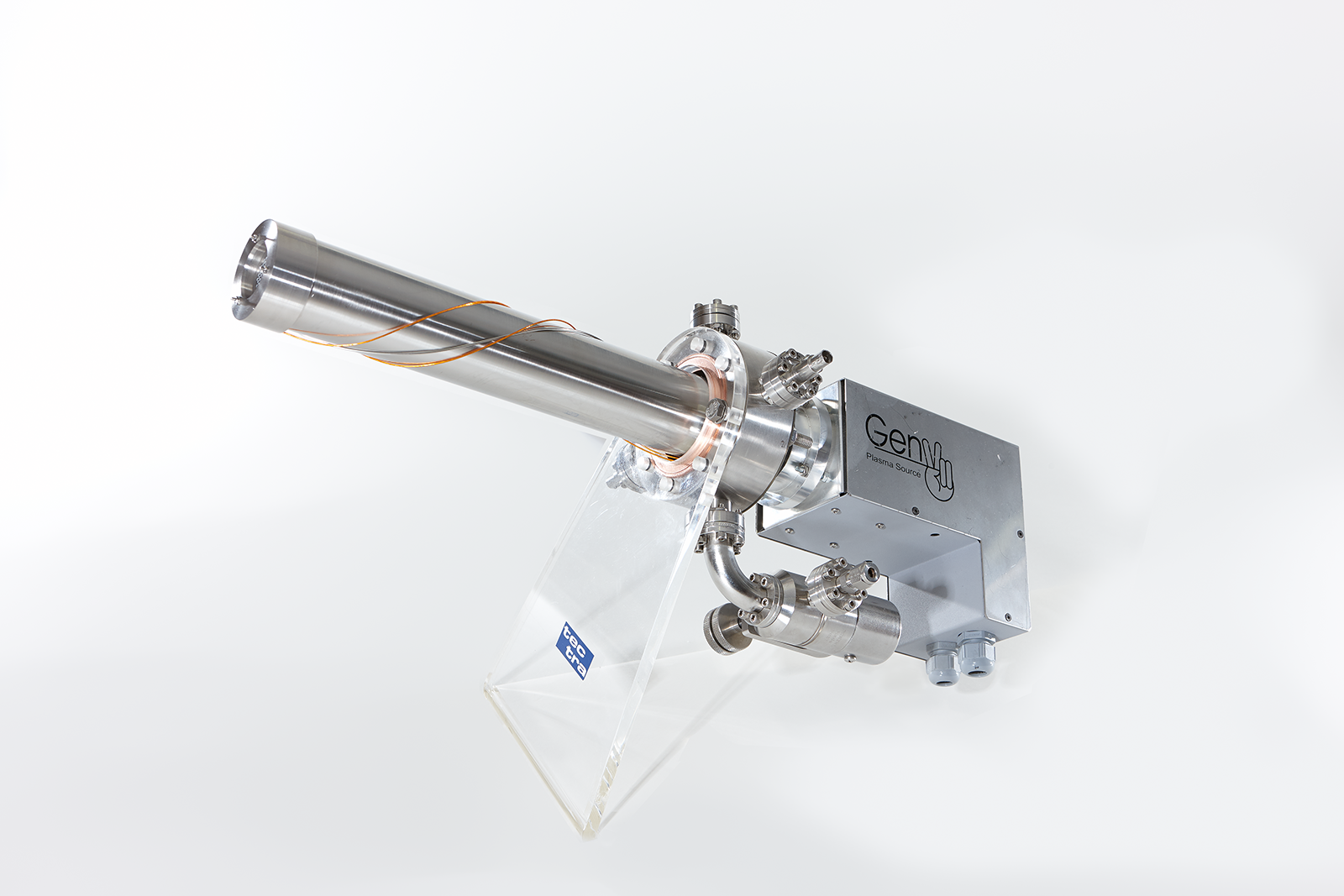PLASMA SOURCES
The tectra Plasma Source* is a multi-purpose source which can easily be user configured to produce either atoms or ions and finds uses in a wide range of HV and UHV applications. By easy exchange of the beam optics the source can be configured to operate in several distinct modes. The main modes are Atom Source, Ion Source and Atom/Ion Hybrid Source. Besides delivering different species (atoms, ions, radicals) the Plasma Source covers the complete energy range from neutral thermal atoms to above 1.500eV. The shape of the beam and current densities can be altered by using different beam optics.
A plasma is created in a coaxial waveguide by evanescent wave coupling of microwave energy at 2.45GHz. The plasma is further enhanced by the ECR action of a quadrupole magnetic field producing an extensive surface in the plasma on which electron cyclotron resonance at the given microwave frequency takes place.
* developed in collaboration with Prof. Dr. Anton, University of Hamburg, Inst. für Angewandte Physik


